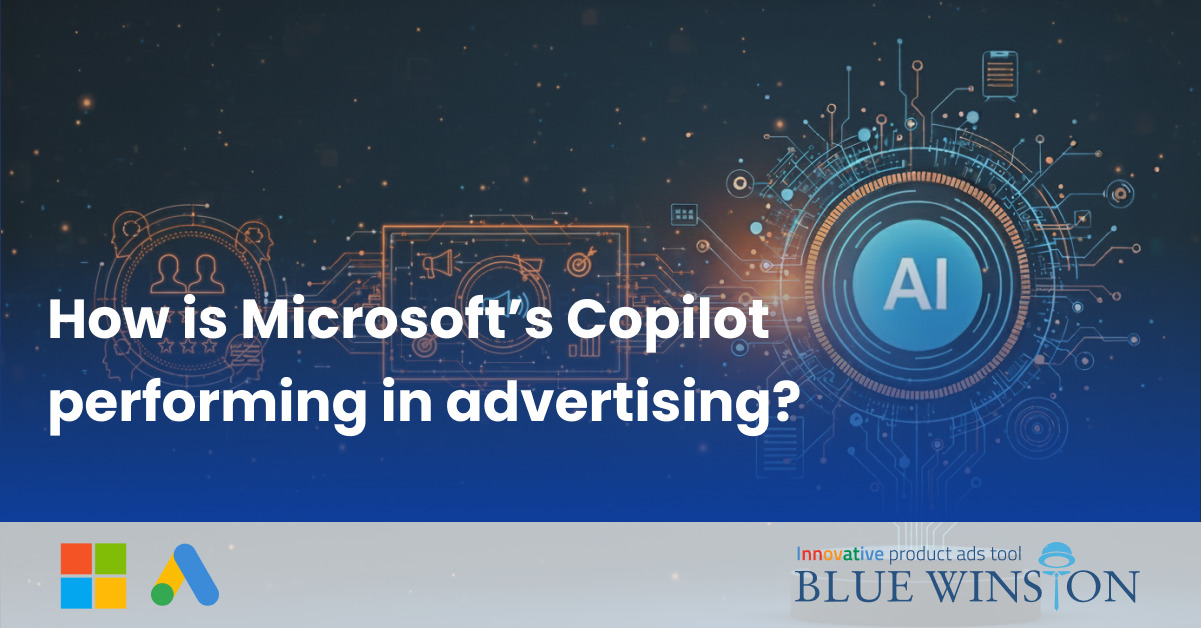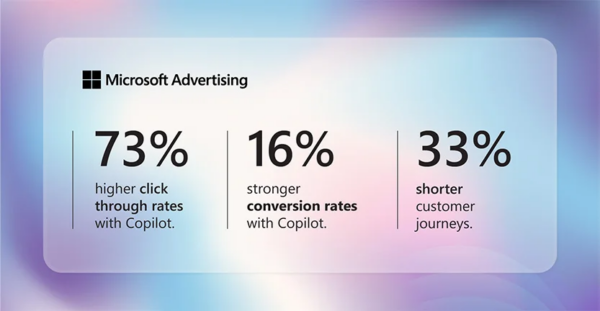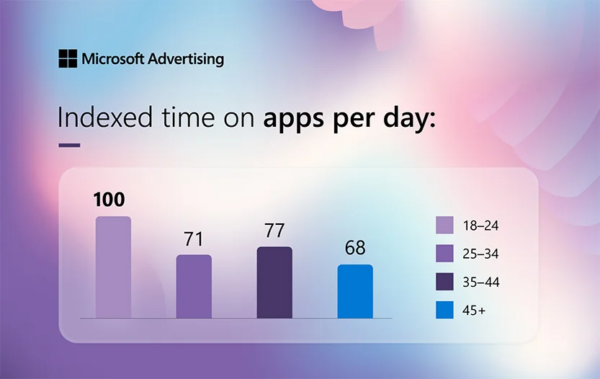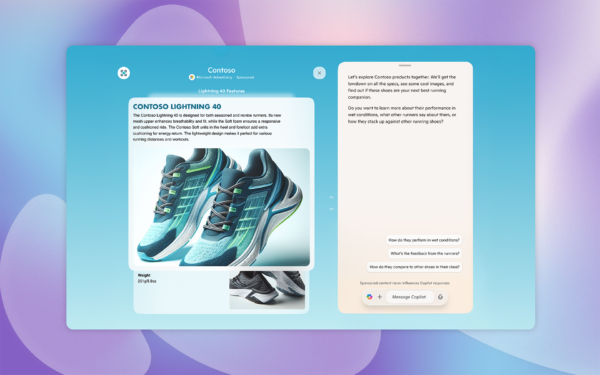AI is transforming the way we communicate, work, search for information, and shop. While a large part of the advertising industry is still experimenting with how to adapt to this new reality, Microsoft has long since jumped on board.
Its AI assistant, Copilot, is becoming one of the most interesting and effective advertising spaces today. Not because it floods users with more ads, but rather because it knows how to present them at the right time and in the right way.
Copilot as a new advertising channel
It’s not a chatbot, it’s a contextual partner.
What makes Copilot exceptional is its ability to “read the room.” Instead of the traditional search format where you enter a query and receive a list of links, Copilot engages in conversation. It follows the overall context and offers responses – including ads – that blend naturally into the flow of questions and answers.
Advertising in this environment isn’t perceived as an annoying banner or a disruptive popup. On the contrary, Microsoft has developed an “ad voice” system that explains why an ad is being shown and clearly labels it as sponsored content. The result? Greater user trust, fewer so-called “back clicks,” and a higher likelihood of conversion.
The data supports this as well. Copilot ads have, on average, a 73% higher click-through rate (CTR) and a 16% higher conversion rate compared to traditional search. Moreover, customer journeys are shortening – there are up to 33% fewer steps from first interaction to purchase.
Source: Microsoft Ads blog
Gen Z feels right at home with Copilot
Microsoft also has a strong understanding of who its users are and where the greatest potential lies. According to research, more than one-third of Copilot users are between the ages of 18 and 29. These younger users are used to instant answers, expect personalization, and navigate the digital world more quickly than any previous generation.
Source: Microsoft Ads blog
For advertisers, this represents an opportunity to reach an audience that is demanding but also active and willing to make purchases – provided they receive the right content at the right moment. Interestingly, younger users often encounter just one or two ads before making a conversion. This increases the pressure on quality, relevance, and timing and that’s exactly where Copilot excels.
Mobile, voice, and showroom-style experiences
Copilot already works as an assistant across PCs, smartphones, the Edge browser, and within the Windows operating system. One area seeing particularly rapid growth is voice search. Between November 2024 and May 2025, the number of users using voice features in the Copilot mobile app increased sixfold. We’re moving closer to a world without traditional user interfaces – the so-called “Zero UI” future – where we no longer click, but instead have conversations.
Microsoft is also testing new formats like Showroom Ads, interactive mini-presentations of products delivered directly within the chat. Instead of standard links, users can “play through” a recommended product, see it in different colors, compare features, or read reviews – all without leaving the conversation.
Source: Microsoft Ads blog
AI versus traditional advertising
While traditional advertising relies on cookies, algorithms, and constant budget optimization, AI-assisted environments like Copilot offer a more intuitive understanding of user intent. They don’t just ask what the person is looking for – they seek to understand why – and tailor offers accordingly.
For brands, this means a chance not just to be visible, but to be useful. And in the digital space, being useful significantly increases the chance of being perceived positively – which, in practice, means people are more likely to buy from you.
The numbers confirm this too. Companies like Samsung have already seen a threefold increase in clicks and a 143% year-over-year increase in revenue – thanks to using Copilot ads through Performance Max (P.Max) campaigns. These aren’t just nice figures for a presentation – they’re clear signals that Copilot truly works.
Conclusion
Microsoft’s Copilot is showing that the advertising landscape is no longer about who can shout the loudest, but about who can listen. At a time when users are tired of ads following them around the internet, here comes a tool that can hold a conversation and gently guide people toward the right product or service.
For advertisers, this is a chance to be where their customers are, not in banners, but in conversations. And for users, it’s finally advertising that doesn’t annoy – it helps.
 Get Microsoft Ads setup, tools and coupon for
Get Microsoft Ads setup, tools and coupon for  free!
free! 








